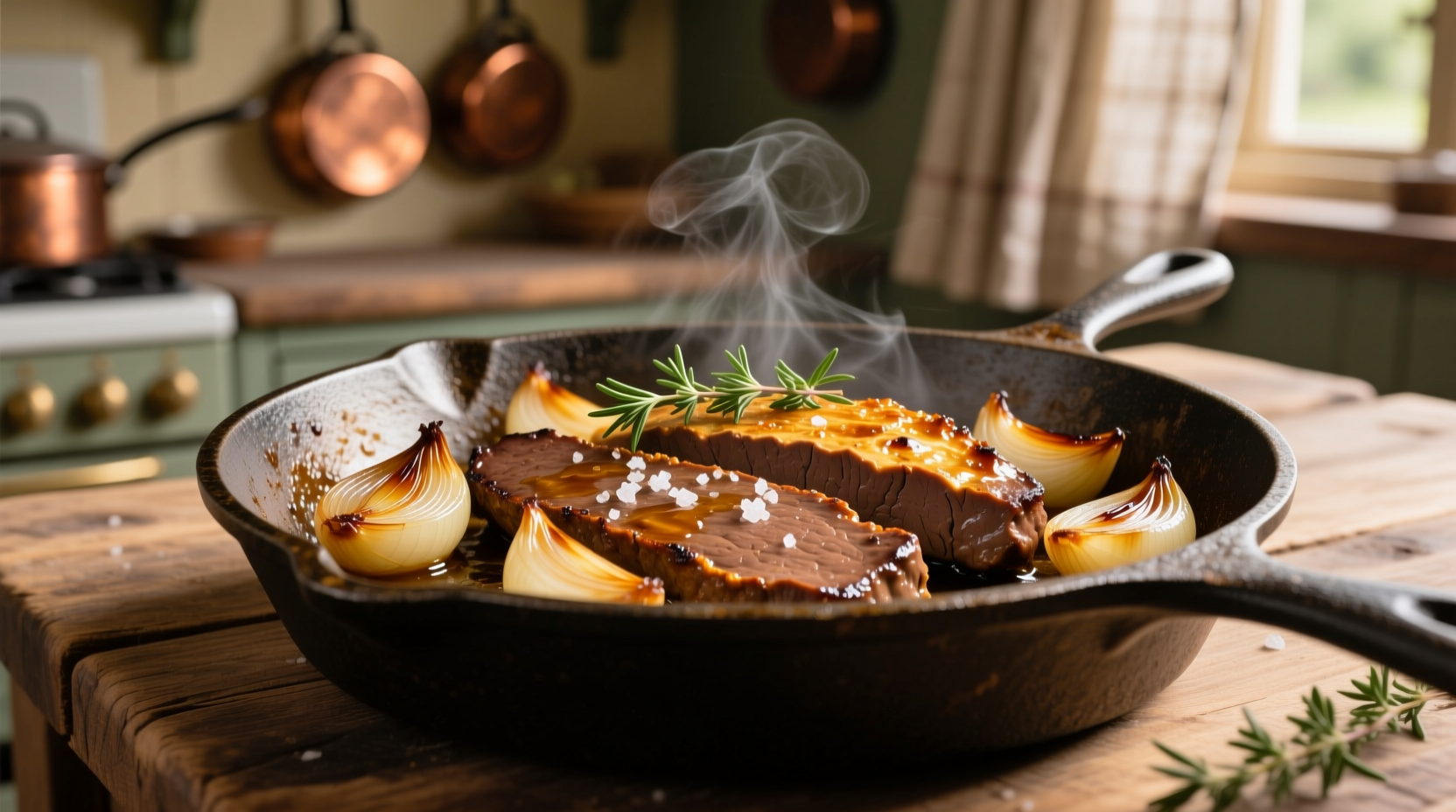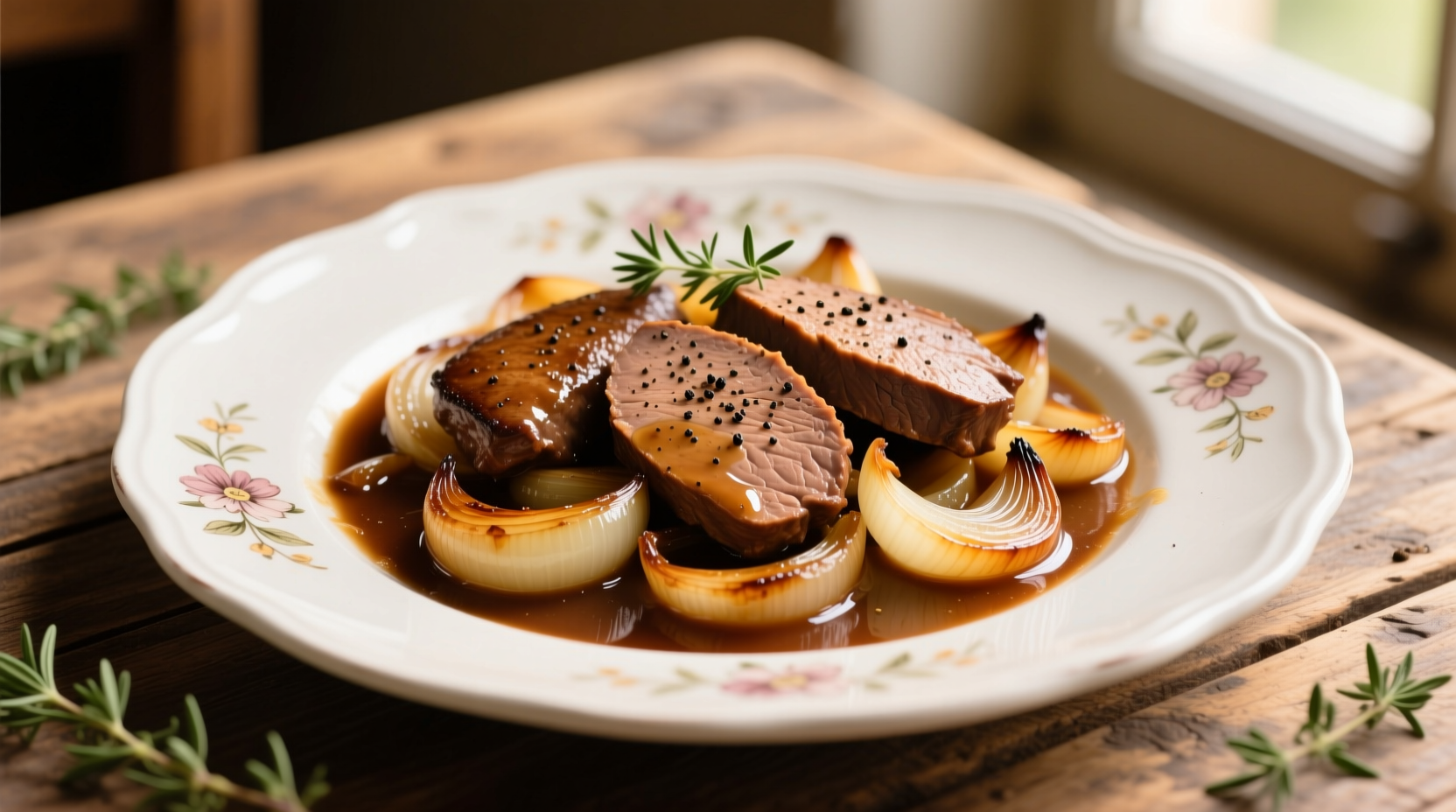Perfectly cooked liver and onions features tender, flavorful liver with caramelized onions—never tough or bitter. This foolproof method uses a simple acid soak to eliminate metallic taste, precise temperature control to prevent rubberiness, and proper searing for golden-brown texture. You'll need calf's liver (4-6 oz per serving), yellow onions, apple cider vinegar, flour, butter, and seasonings. Total preparation and cooking time: 35 minutes.
Nothing transforms humble ingredients into comfort food magic quite like a perfectly executed liver and onions recipe. Yet most home cooks struggle with this classic dish—ending up with rubbery, metallic-tasting results that send plates straight to the trash. The secret isn't complicated equipment or rare ingredients; it's understanding the science behind liver's unique protein structure and how onions caramelize at different temperatures.
| Liver Type | Flavor Profile | Cooking Time | Best Preparation Method |
|---|---|---|---|
| Calf's Liver | Mildest, most delicate | 3-4 minutes per side | Soak in milk/vinegar, medium-high heat |
| Beef Liver | Strongest, iron-rich | 2-3 minutes per side | Extended acid soak, high heat sear |
| Chicken Liver | Creamy, slightly sweet | 2-2.5 minutes per side | Quick soak, medium heat |
The Critical Prep Step Most Cooks Skip
Before touching your stove, prepare an acid bath: combine 2 cups buttermilk or whole milk with 2 tablespoons apple cider vinegar in a shallow dish. Submerge 1½ pounds thinly sliced calf's liver (about ¼ inch thick) for 30-60 minutes. This crucial step denatures the myoglobin proteins responsible for liver's metallic taste, according to USDA Food Safety and Inspection Service research on meat protein behavior. Never skip this—it's the difference between edible and exceptional.

Mastering the Cooking Process
After draining and patting liver completely dry (moisture causes steaming, not searing), dredge in seasoned flour. Heat 2 tablespoons butter and 1 tablespoon bacon fat in a cast-iron skillet over medium-high heat (375°F). The USDA recommends cooking liver to an internal temperature of 160°F—use an instant-read thermometer for precision. Cook 3-4 minutes per side until golden brown but still slightly pink inside. Remove and keep warm.
Onion Perfection Timeline
While liver rests, caramelize 2 large sliced yellow onions in the same pan:
- 0-10 minutes: High heat to jumpstart browning
- 10-20 minutes: Reduce to medium-low, scraping fond
- 20-30 minutes: Add 1 tablespoon brown sugar to accelerate caramelization
- 30-40 minutes: Deglaze with 1¼ cups beef broth
This gradual temperature approach follows the Maillard reaction principles documented by the American Chemical Society—creating complex flavor compounds without burning.
When This Recipe Works Best (And When It Doesn't)
This method shines for traditional American diner-style liver and onions, but has limitations:
- Ideal for: Weeknight dinners, iron-deficient diets, budget-conscious cooking
- Not suitable: Raw liver diets, extremely rare preparations (unsafe below 160°F), vegan adaptations
- Dietary note: One serving provides 300% of daily vitamin A needs—avoid if pregnant or on blood thinners
Pro Chef Variations Worth Trying
Once you've mastered the classic version, experiment with these professional twists:
- European Style: Add 2 tablespoons brandy to onions and finish with capers
- Southern Twist: Substitute bacon grease for butter and add a dash of hot sauce
- Texture Upgrade: Double-dredge liver in flour for extra-crispy exterior
Serving and Storage Guidelines
Serve immediately over mashed potatoes with steamed green beans. Leftovers keep refrigerated for 3 days—reheat gently in skillet with broth splash to prevent drying. Never freeze cooked liver; texture becomes unpalatable.











 浙公网安备
33010002000092号
浙公网安备
33010002000092号 浙B2-20120091-4
浙B2-20120091-4